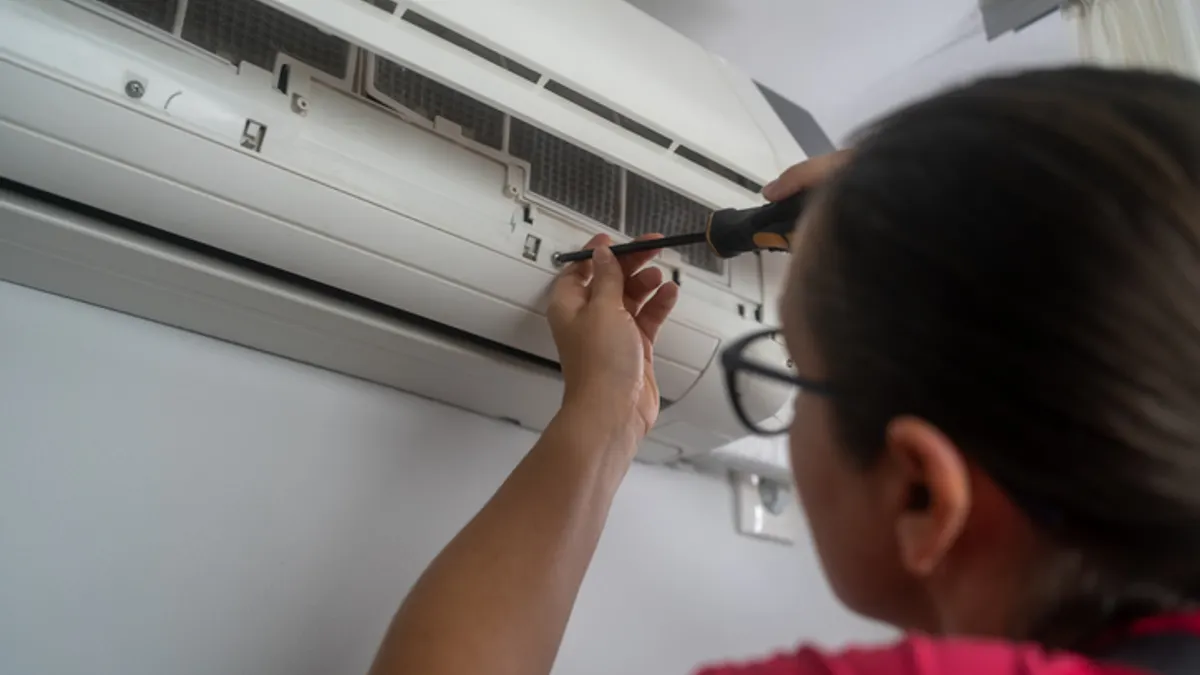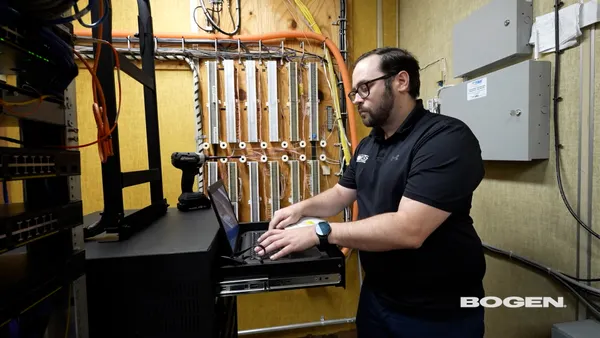Dive Brief:
- Concerns about the safety, cleanliness and maintenance of workspaces — such as patient care areas, employee break rooms and offices — are key factors that affect employee satisfaction in healthcare organizations, according to a JLL survey of 1,066 full-time and part-time U.S. healthcare company employees.
- Nearly a quarter of healthcare employees are considering leaving their jobs in the next 12 months, JLL said in a healthcare employee perspective report released Wednesday. Employees considering a job switch were more likely to report dissatisfaction with the adequacy of safety, cleanliness and sound privacy in break rooms and offices, while those intending to stay were more likely to report that these spaces were clean, well-maintained and had adequate sound privacy, per the report.
- Healthcare facility managers can implement workplace design strategies to enhance employee retention and well-being, such as installing sound-absorbing materials and installing proper lighting, scheduling regular cleaning and maintenance schedules for break rooms and providing access to natural light, Amy Nunziata, healthcare operations lead at JLL Work Dynamics, said in an interview.
Dive Insight:
Efficient workplace planning can enhance patient care and employee well-being, offering a way for healthcare facility managers that struggle with aging equipment and labor shortages to boost productivity and improve staff retention, according to the report. Workplace improvements are battling against numerous budget priorities, including technology, sustainability and ongoing maintenance, but “investing in human experience can help in the long run,” JLL says.
JLL’s survey findings reveal a large gap in workplace safety between employees who considered leaving and those who intended to stay. While 87% of employees intending to stay on in their job for the next two years said their break rooms and offices are safe, just 72% of those who planned to leave in that time said the same. To address safety concerns, healthcare facilities can add lighting, increase security patrols and invest in safety training, including de-escalation practices that can help make campuses safer, JLL said in the report.
Facility managers can also consider implementing a visitor management system to track and control access to facilities and create dedicated staff entrances to reduce congestion and improve access, Nunziata said.
Less than 60% of respondents who considered leaving their jobs in the next 12 months described their employee-focused spaces such as break rooms and offices as “clean” and “well-maintained,” compared with more than 70% of those who did not intend to leave, according to the report.
While most respondents rated their workplace favorably, employee-focused spaces ranked “significantly worse in terms of new/old, well-maintained/run-down and adequate/inadequate sound privacy,” per the report.
Less than half of respondents considered their employee spaces to be new, while 28% described their break rooms and offices as old, per the report. Although most participants described both patient care areas and employee spaces as “clean” and “well-maintained,” 14% labeled employee spaces as run-down and 11% considered them “dirty.”
Further, 22% of respondents pointed to inadequate sound privacy in employee spaces, compared with 15% of those who reported the same issue in patient care areas.
“Balancing tight budgets between patient care spaces and employee areas is a common challenge in healthcare facilities today,” Nunziata said, recommending that facilities teams prioritize investments in workplace design based on employee feedback. High-impact, low-cost improvements — such as fresh paint and updated lighting — can significantly improve workspaces without straining budgets, she said. Employees should also be trained on the proper use and care of facilities to reduce wear and tear, Nunziata said.
Sixty-two percent of all employees ranked compensation and benefits among the top three drivers of their decision to stay on in their job, with a third of millennials naming pay and benefits as the top deciding factor, compared with 21% of baby boomers and 22% of Generation X respondents, per JLL’s survey. In today’s competitive labor market, however, employers need to “look beyond compensation and recognize how the physical workforce plays a crucial role in employee experience and can significantly impact employee satisfaction,” Cheryl Carron, COO at JLL Work Dynamics Americas, said in a news release Wednesday.
Flexibility was named as a top three driver by one-third of survey participants, with remote work or flexibility in work hours ranking high for older generations, JLL says. While constructing flexible work arrangements is difficult in healthcare, it can help to attract and retain talent and reduce burnout among staff, the report notes. Creating an employee advisory board to gather and act on employee feedback can help identify gaps in the workplace experience, the report says.













